The NVIDIA GeForce RTX 2070 Founders Edition Review: Mid-Range Turing, High-End Price
by Nate Oh on October 16, 2018 9:00 AM ESTCompute & Synthetics
Shifting gears, we'll look at the compute and synthetic aspects of the RTX 2070. Though it has its own GPU in the form of TU106, the hardware resources at hand are similar in progression to what we've seen in TU102 and TU104.
Starting off with GEMM tests, the RTX 2070's tensor cores are pulled into action with half-precision matrix multiplication, though using binaries originally compiled for Volta. Because Turing is backwards compatible and in the same compute capability family as Volta (sm_75 compared to Volta's sm_70), the benchmark continues to work out-of-the-box, though without any Turing optimizations.
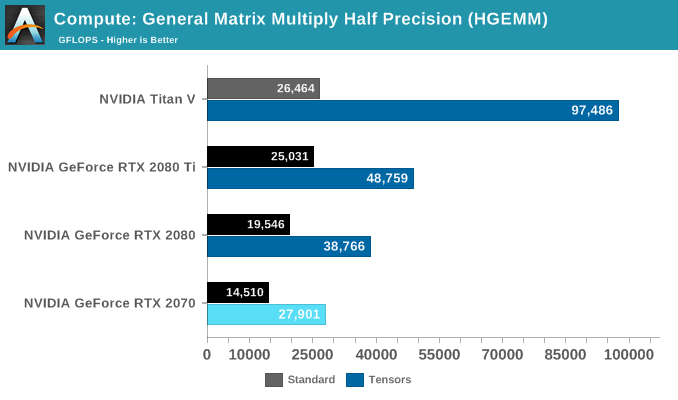
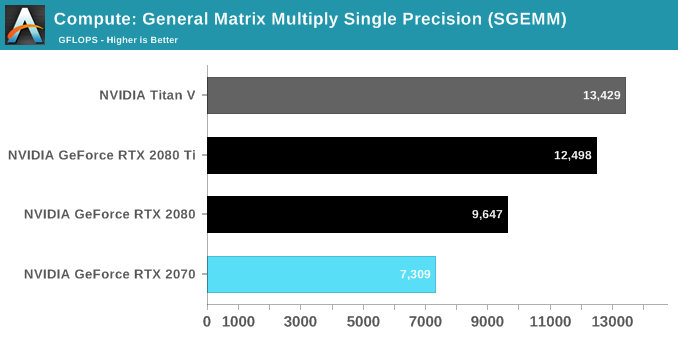
At reference specifications, peak theoretical tensor throughput is around 107.6 TFLOPS for the RTX 2080 Ti, 80.5 TFLOPS for the RTX 2080, and 59.7 TFLOPS for the RTX 2070. Unlike the 89% efficiency with the Titan V's 97.5 TFLOPS, the RTX cards are essentially at half that level, with around 47%, 48%, and 45% efficiency for the RTX 2080 Ti, 2080, and 2070 respectively. A Turing-optimized binary should bring that up, though it is possible that the GeForce RTX cards may not be designed for efficient tensor FP16 operations as opposed to the INT dot-product acceleration. After all, the GeForce RTX cards are for consumers and ostensibly intended for inferencing rather than training, which is the reasoning for the new INT support in Turing tensor cores.
In terms of SGEMM efficiency though, the RTX 2070 is hitting a ridiculous 97% of its touted 7.5 TFLOPS, though to be fair the reference specifications here are done manually rather with a reference vBIOS. The other two GeForce RTX cards are at similar 90+% levels of efficiency, though a GEMM test like this is specifically designed for maximum utilization.
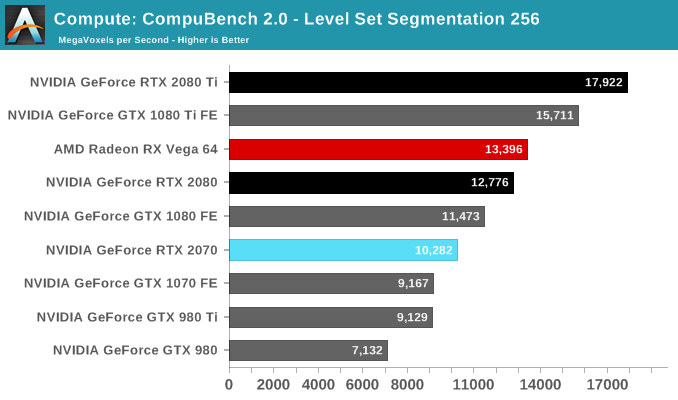
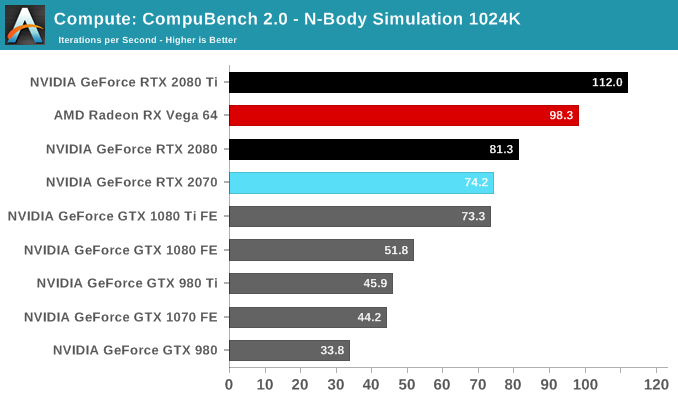
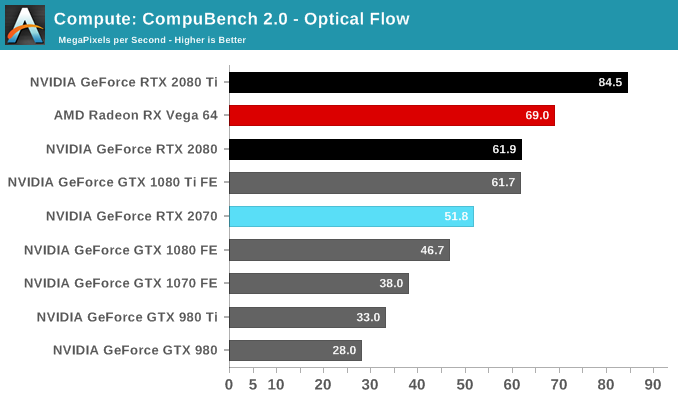
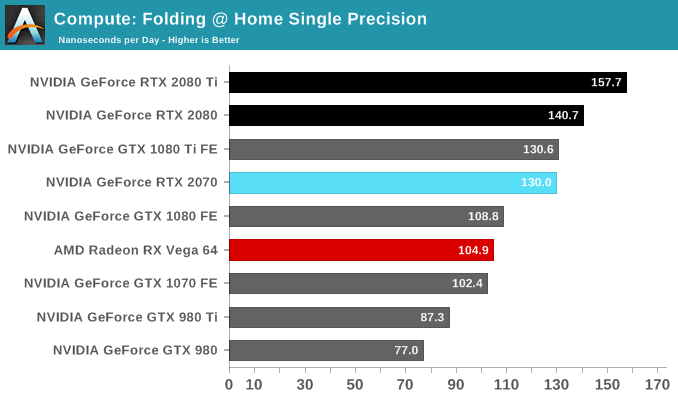
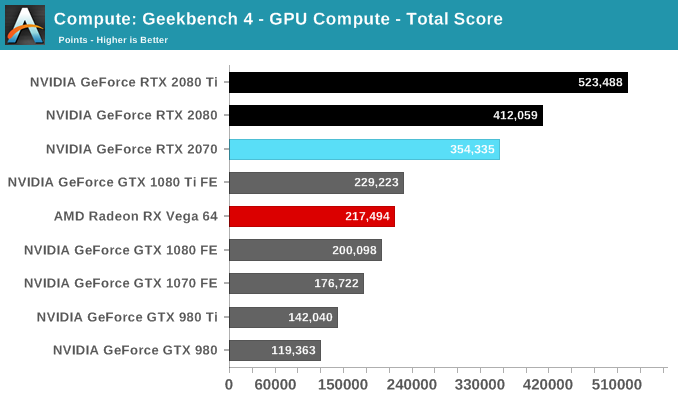
The breakdown of the GB4 subscores seems to reveal a similar uplift like we spotted with the Titan V, which had scored in excess of 509,000 points. We'll have to investigate further but Turing and Volta are clearly accelerating some of these workloads beyond what was capable in Pascal and Maxwell.
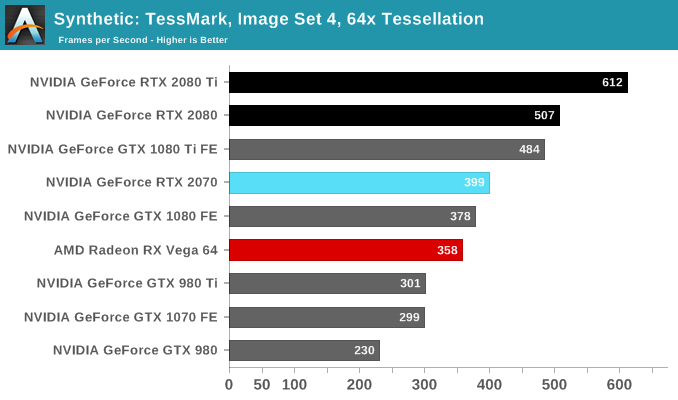
Given that TU106 has 75% of the hardware resources of TU104, the tessellation performance is in line with expectrations. For reference, we noted earlier that the Titan V scored 703 while the Titan Xp scored 604.
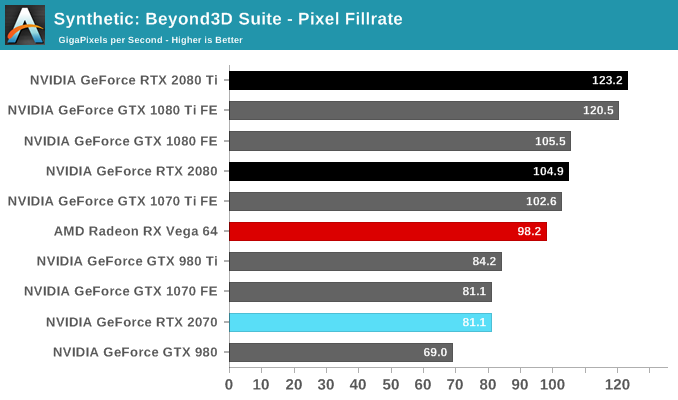
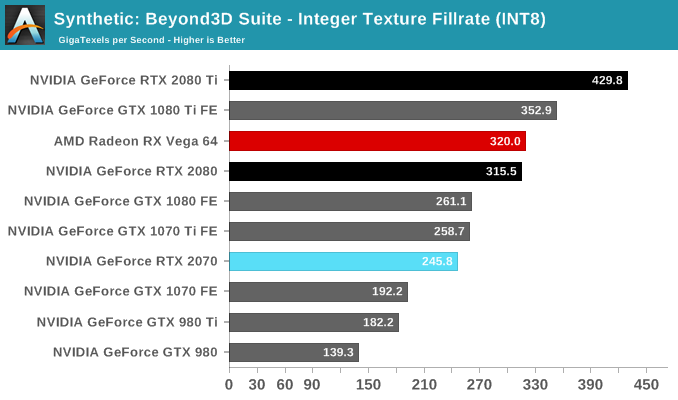










121 Comments
View All Comments
hansmuff - Tuesday, October 16, 2018 - link
Great review making some very pointed and smart commentary. Thank you!Hixbot - Tuesday, October 16, 2018 - link
Nvidia are not even interested in competing with themselves.shabby - Tuesday, October 16, 2018 - link
It's hilarious in a way, take the tensor cores and ray tracing out of the equation and there's barely any difference between pascal and Turing. It's almost like that extra memory bandwidth is giving Turing its speed bump and nothing more.PeachNCream - Tuesday, October 16, 2018 - link
NVIDIA is heavily marketing ray tracing as the killer feature for the RTX cards. Its clear that a generational gain in performance wasn't in the cards (pun intended) this time around.shabby - Tuesday, October 16, 2018 - link
And with Ray tracing turned on these things will perform like cards from 4 years ago. Nvidias going back to the future.AshlayW - Tuesday, October 16, 2018 - link
So in Far Cry 5, a game that I play a lot, I've essentially got RTX 2070 performance with my Vega 56 (OC+ Flashed to 64), but for £399 and the game free with it? Cool!The_Assimilator - Tuesday, October 16, 2018 - link
But you also need a small nuclear reactor to power it and a moderately-sized dam to cool it, so there's that.Spunjji - Wednesday, October 17, 2018 - link
If you run your computer for anything like sensible periods of time, that extra power draw still doesn't come close to amounting to the price difference. Remember, you have to consider it in context of the power draw of your entire home.pixelstuff - Tuesday, October 16, 2018 - link
I think my price limit on GPUs is the "not much more than an entire gaming console with slightly better performance" bracket of $350-400. I guess we'll see if the 2060 fits that bill and makes a worthy upgrade to the 970. Otherwise I'll be waiting one extra generation this time around instead of upgrading every other generation.Icehawk - Tuesday, October 16, 2018 - link
I’m with the crowd that says wtf to the new pricing - I’m a 670>970 owner and was hoping to upgrade to another x70 for $350-400 but they are priced too high for me now to justify. Hope they bring prices back to reality for the 2170 or that they offer GTX models along with RTX.If they want to shift the cards up a rank, IMO, they should have adjusted the naming schema.